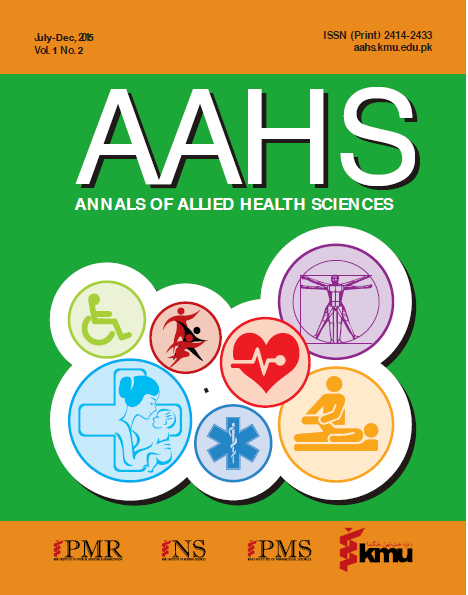A RANDOMIZED CONTROLLED TRIAL COMPARING THE EFFECTS OF REST BREAKS AND EXERCISE BREAKS IN REDUCING MUSCULOSKELETAL DISCOMFORT
Keywords:
Exercise Breaks, Rest Breaks, Static Workstation, Ergonomics, Office Workers, Musculoskeletal Discomfort, Musculoskeletal Disorders (MSD’s), Visual Display Unit (VDU), and ErgonomicsAbstract
AIM: The aim of this clinical trial was to compare the effectiveness of Rest Breaks and Exercise Breaks in reducing work related musculoskeletal discomfort in static workstation office workers.
METHODS: This study was conducted at a corporate sector organization in Karachi, between August, 2014 and February, 2015. A total of 32 participants, 26 males and 6 females with musculoskeletal discomfort working in static work station, were randomly allocated to two interventional groups (16 in each group). One group received a Supplementary Rest Break Intervention and the other group received Exercise Break Intervention. Visual Numeric Rating Scale (VNRS) and Cornell Musculoskeletal Discomfort Questionnaire (CMDQ) were used to evaluate the self-perceived discomfort and general body discomfort respectively. Pre- and post- scores of VNRS and CMDQ were recorded. Paired sample T-test was used to analyze the results within groups and independent t-test was used to compare the effectiveness among the two treatment protocols.
RESULTS: A statistically significant differences favoring the outcomes of the patients in Exercise Breaks group compared to the outcomes of the patients in Rest Breaks group were observed on self-perceived discomfort (p<0.05) and general body discomfort (p<0.05).
CONCLUSION: Exercise Breaks provide better protection than Supplemental Rest Breaks in decreasing musculoskeletal discomfort.
Downloads
Published
How to Cite
Issue
Section
License
Open Access This article is licensed under a Creative Commons Attribution-NonCommercial 4.0 International License, which permits any non-commercial use, sharing, adaptation, distribution and reproduction in any medium or format, as long as you give appropriate credit to the original author(s) and the source, provide a link to the Creative Commons licence, and indicate if changes were made. To view a copy of this licence, visit http://creativecommons.org/licenses/by-nc/4.0/.






